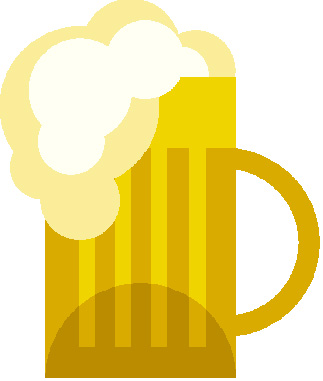“Gila Monster,” “Road Runner,” “Fat Weasel,” “Red Tail,” “Steelhead”…No, not a tour of the local zoo, but the names of a few of the microbrewery beers which are getting some macro attention these days. Small breweries have been around for a long time, but, from Prohibition until the mid 1970’s, were relatively unheard of. However, the last two decades have seen an explosion of “craft breweries” or “microbreweries” which offer an alternative to the mass produced and generally insipid beers which have dominated the market since the repeal of Prohibition in 1933. The renaissance of real beer has even caught the attention of the macro Goliaths, many of whom now produce “micros” under a generic “special products” division of the parent company. The “micro wave” has rippled across the USA and is now big business from coast to coast. Needless to say, California, which lays claim to the first modern microbrewery, still leads the field.
The success of micros has as much to do with their varietal nature as it does with the steadily increasing globaliztion of the market. Apart from international travel, the wealth of choice of international cuisine offered by restaurants across the USA has introduced unlimited opportunities to sample beers from around the world. This, in turn, has led to an appreciation of the fact that not all beers are created equal, that not all are pasteurized/mass produced, and that (gasp!) imported beers often taste better than the standard USA macros. By the 1980s, there was not only a big demand for better beer in America, but there were several entrepreneurs who recognized the trend and were willing to gamble on it–despite the fact that only 40 brewing companies remained in the entire United States, compared to well over 2,000 a hundred years before. Today there are thousands of microbreweries in the USA (I refuse to enter into the realm of strict definitions of “micro” at this point–suffice it to say that the term generally implies a brewery that produces less than 15,000 barrels of “real” beer annually). The advent of microbreweries; the legalization of home beer brewing in 1979; and the 1982 “Brewpub Law” which enabled brewers to sell their products in an attached pub rather than via distributors only, all attest to a major change in the American public’s perception of what beer is all about.
Like wines, micro beers afford an introduction into the world of experimentation and tasting. Increased demand has lead to an increasing number of “brewpubs” where the beer is brewed and served on the premises. Such establishments not only educate the public regarding the nature of real beer, but are modern and civilized alternatives to the old fashioned “beer joints” with their limited selection of mass produced macro beers. If you don’t have access to a microbrewery or brewpub, it’s still well worth experimenting with some of the amusing names and fantastic labels which are the hallmark of micros you can find on the shelves of any decent liquor supplier, or even your local supermarket (but check the fine print and try to avoid macro copy cats). Micros, macros–never mind; suck it and see for yourself! Like countless other “gourmet” beer drinkers, I think you’ll discover that micros offer what macros so often lack–flavor, freshness, and a wealth of variety.
In case you’re wondering what this has to do with Geography, think about such geographical terms as “globalization” and “scale,” google the key words “geography of beer,” or just have a few beers with a geographer and bring the subject up. That’s what I did this weekend! Cheers – Bill Norrington



 copy.jpg)

